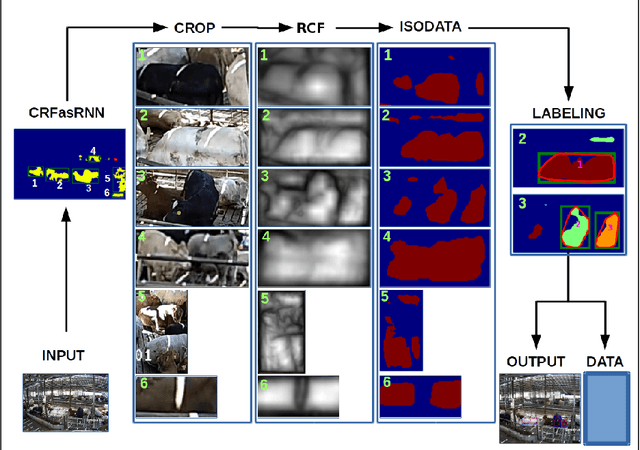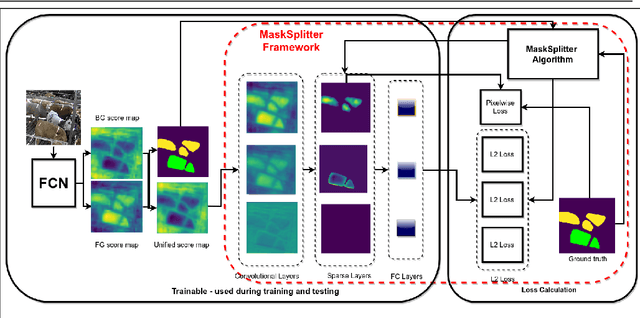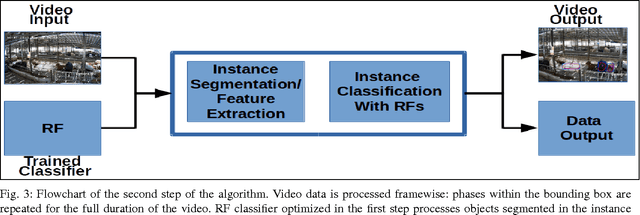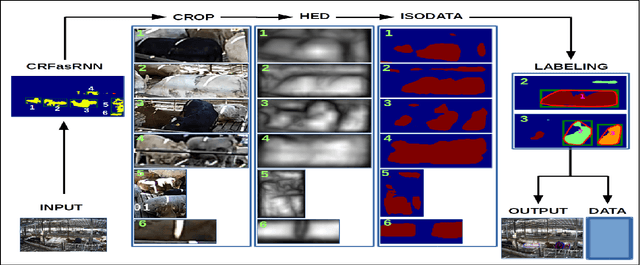Aram Ter-Sarkisov
Logo Generation Using Regional Features: A Faster R-CNN Approach to Generative Adversarial Networks
Oct 02, 2021



Abstract:In this paper we introduce Local Logo Generative Adversarial Network (LL-GAN) that uses regional features extracted from Faster R-CNN for logo generation. We demonstrate the strength of this approach by training the framework on a small style-rich dataset of real heavy metal logos to generate new ones. LL-GAN achieves Inception Score of 5.29 and Frechet Inception Distance of 223.94, improving on state-of-the-art models StyleGAN2 and Self-Attention GAN.
Network of Steel: Neural Font Style Transfer from Heavy Metal to Corporate Logos
Jan 10, 2020



Abstract:We introduce a method for transferring style from the logos of heavy metal bands onto corporate logos using a VGG16 network. We establish the contribution of different layers and loss coefficients to the learning of style, minimization of artefacts and maintenance of readability of corporate logos. We find layers and loss coefficients that produce a good tradeoff between heavy metal style and corporate logo readability. This is the first step both towards sparse font style transfer and corporate logo decoration using generative networks. Heavy metal and corporate logos are very different artistically, in the way they emphasize emotions and readability, therefore training a model to fuse the two is an interesting problem.
Beef Cattle Instance Segmentation Using Fully Convolutional Neural Network
Sep 20, 2018



Abstract:We present an instance segmentation algorithm trained and applied to a CCTV recording of beef cattle during a winter finishing period. A fully convolutional network was transformed into an instance segmentation network that learns to label each instance of an animal separately. We introduce a conceptually simple framework that the network uses to output a single prediction for every animal. These results are a contribution towards behaviour analysis in winter finishing beef cattle for early detection of animal welfare-related problems.
Bootstrapping Labelled Dataset Construction for Cow Tracking and Behavior Analysis
Mar 30, 2017



Abstract:This paper introduces a new approach to the long-term tracking of an object in a challenging environment. The object is a cow and the environment is an enclosure in a cowshed. Some of the key challenges in this domain are a cluttered background, low contrast and high similarity between moving objects which greatly reduces the efficiency of most existing approaches, including those based on background subtraction. Our approach is split into object localization, instance segmentation, learning and tracking stages. Our solution is compared to a range of semi-supervised object tracking algorithms and we show that the performance is strong and well suited to subsequent analysis. We present our solution as a first step towards broader tracking and behavior monitoring for cows in precision agriculture with the ultimate objective of early detection of lameness.
K-Bit-Swap: A New Operator For Real-Coded Evolutionary Algorithms
Apr 22, 2016


Abstract:There has been a variety of crossover operators proposed for Real-Coded Genetic Algorithms (RCGAs), which recombine values from the same location in pairs of strings. In this article we present a recombination operator for RC- GAs that selects the locations randomly in both parents, and compare it to mainstream crossover operators in a set of experiments on a range of standard multidimensional optimization problems and a clustering problem. We present two variants of the operator, either selecting both bits uniformly at random in the strings, or sampling the second bit from a normal distribution centered at the selected location in the first string. While the operator is biased towards exploitation of fitness space, the random selection of the second bit for swap- ping makes it slightly less exploitation-biased. Extensive statistical analysis using a non-parametric test shows the advantage of the new recombination operators on a range of test functions.
Incremental Adaptation Strategies for Neural Network Language Models
Jul 07, 2015



Abstract:It is today acknowledged that neural network language models outperform backoff language models in applications like speech recognition or statistical machine translation. However, training these models on large amounts of data can take several days. We present efficient techniques to adapt a neural network language model to new data. Instead of training a completely new model or relying on mixture approaches, we propose two new methods: continued training on resampled data or insertion of adaptation layers. We present experimental results in an CAT environment where the post-edits of professional translators are used to improve an SMT system. Both methods are very fast and achieve significant improvements without overfitting the small adaptation data.
Derivation of Upper Bounds on Optimization Time of Population-Based Evolutionary Algorithm on a Function with Fitness Plateaus Using Elitism Levels Traverse Mechanism
Aug 30, 2013
Abstract:In this article a tool for the analysis of population-based EAs is used to derive asymptotic upper bounds on the optimization time of the algorithm solving Royal Roads problem, a test function with plateaus of fitness. In addition to this, limiting distribution of a certain subset of the population is approximated.
Elitism Levels Traverse Mechanism For The Derivation of Upper Bounds on Unimodal Functions
Apr 02, 2012


Abstract:In this article we present an Elitism Levels Traverse Mechanism that we designed to find bounds on population-based Evolutionary algorithms solving unimodal functions. We prove its efficiency theoretically and test it on OneMax function deriving bounds c{\mu}n log n - O({\mu} n). This analysis can be generalized to any similar algorithm using variants of tournament selection and genetic operators that flip or swap only 1 bit in each string.
Convergence of a Recombination-Based Elitist Evolutionary Algorithm on the Royal Roads Test Function
Aug 24, 2011

Abstract:We present an analysis of the performance of an elitist Evolutionary algorithm using a recombination operator known as 1-Bit-Swap on the Royal Roads test function based on a population. We derive complete, approximate and asymptotic convergence rates for the algorithm. The complete model shows the benefit of the size of the population and re- combination pool.
Convergence Properties of Two (μ + λ) Evolutionary Algorithms On OneMax and Royal Roads Test Functions
Aug 20, 2011



Abstract:We present a number of bounds on convergence time for two elitist population-based Evolutionary Algorithms using a recombination operator k-Bit-Swap and a mainstream Randomized Local Search algorithm. We study the effect of distribution of elite species and population size.
 Add to Chrome
Add to Chrome Add to Firefox
Add to Firefox Add to Edge
Add to Edge